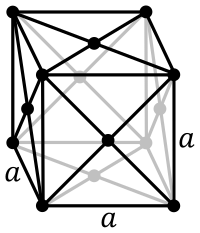
Photo from wikipedia
The objective of the current study is to investigate the natural radioactivity of some building materials, the resulting long-term external and internal effective dose equivalents (EEDE and IEDE) analysis followed… Click to show full abstract
The objective of the current study is to investigate the natural radioactivity of some building materials, the resulting long-term external and internal effective dose equivalents (EEDE and IEDE) analysis followed by indoor radon measurements, and the assessment of some radiological risk indicators associated with radon exposure. A total of 37 samples of building materials were analyzed with a sodium iodide detector (NaI (Tl)), and the computer code RESRAD-BUILD was used for the analysis of the EEDE and IEDE of the structural elements of the houses (walls and floor). For indoor radon measurements, 140 houses were selected, and in each of them was placed 01 RADTRAK dosimeter. Inhalation dose, total dose, and some radiological risk indicators were calculated. The specific activities of 226Ra, 232Th, and 40K for the overall sampled building materials were found to vary between 10 ± 2–52 ± 7, 10 ± 1–95 ± 10, and 31 ± 1–673 ± 20 Bq kg−1, respectively. The dwelling types with bare brick walls, cement mortar plastered walls, and concrete floors show EEDE and IEDE values well below the recommended limits. The corresponding dwelling type contributions to the measured average indoor radon concentration (42 ± 12 Bq m−3) are 22%, 13%, and 16%, respectively. Inhalation dose resulting from the measured indoor radon concentrations varies from 0.35 to 3.24 mSv y−1 with a mean value of 0.96 ± 0.55 mSv y−1, which represents about 65% of the total dose simulated (1.49 ± 0.88 mSv y−1) by the RESRAD-BUILD code. The overall analysis of indoor radon-related radiological risk indicators shows low levels of risk relative to permissible limits.
Journal Title: Environmental Science and Pollution Research
Year Published: 2022
Link to full text (if available)
Share on Social Media: Sign Up to like & get
recommendations!